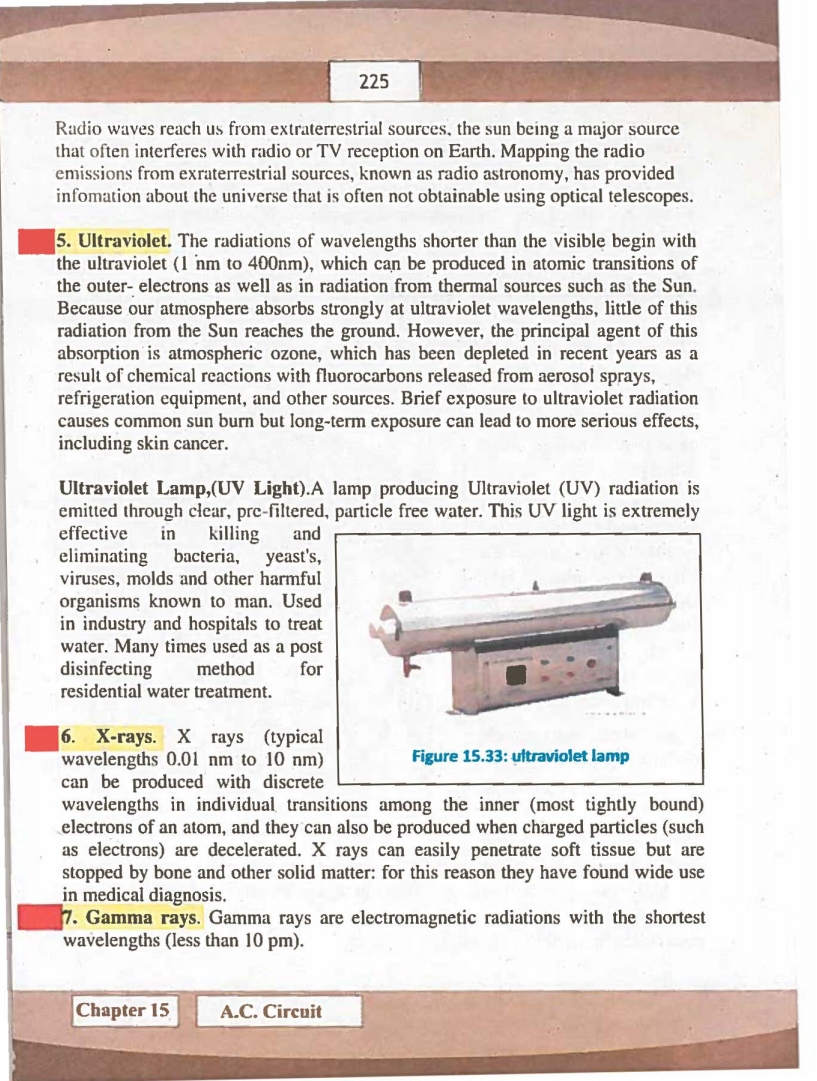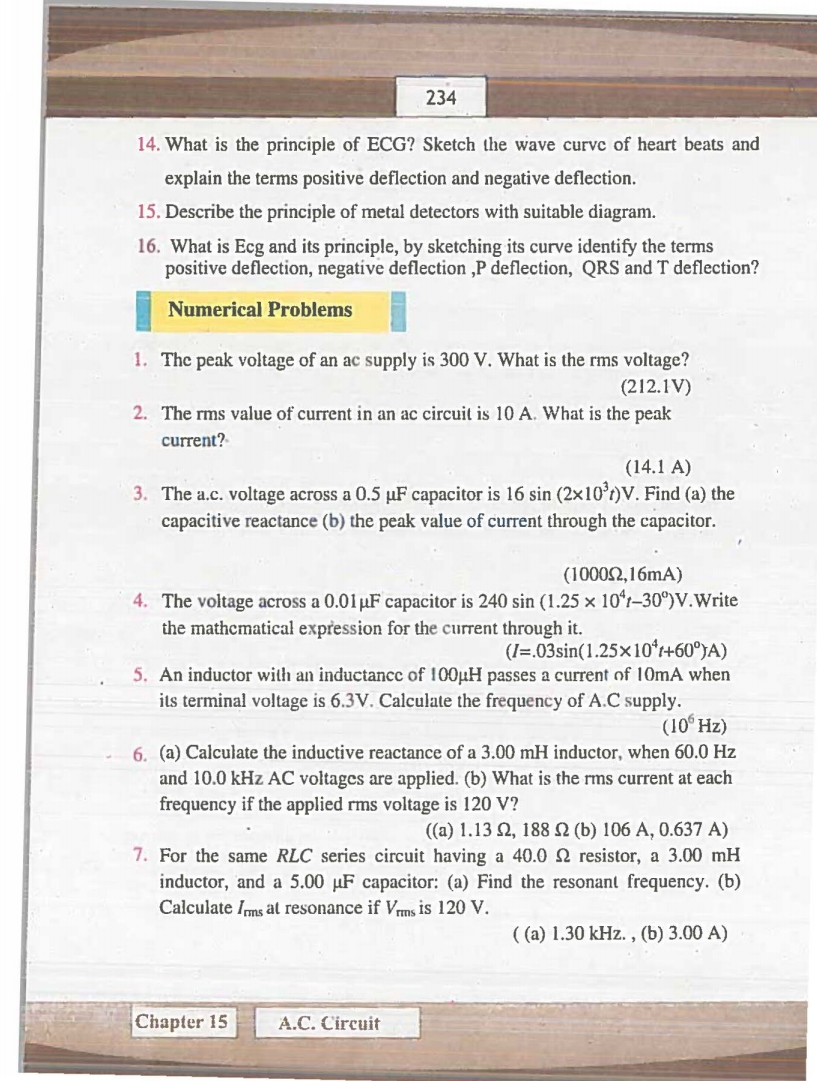After studying this chapter the students will be able to
• describe the terms time period, frequency, instantaneous peak value and
root mean square value of an alternating current and voltage.
• represent a sinusoidally alternating current or voltage by an equation of
the form x = x0 sin rot.
• describe the phase of A.C and how phase Jags and leads in A.C Circuits.
• identify inductors as important components of A.C circuits termed as
chokes (devices which present a high resistance to alternating current).
• explain the flow of A.C through resistors, capacitors and in~uctors.
• apply the knowledge to calculate the reactances of capacitors and
inductors.
• describe impedance as vector summation of resistances and reactances.
• construct phasor diagrams and carry out calculations on circuits including
resistive and reactive components in series.
• solve the problems using the formulae of A.C Power.
• explain resonance in an A.C circuit and carry out calculations using the
resonant frequency formulae.
• describe that maximum power is transferred when the impedances of
source and load match to each other.
• describe the qualitative treatment of Maxwell's equations and production
of electromagnetic waves.
• become familiar with electromagnetic spectrum (ranging from radiowaves
toy-rays). identify that light is a part of~ continuous spectrum of electromagnetic
waves all of which travel in vacuum with same speed.
• describe that the information can be transmitted by radiowaves.
• identify that the microwaves of a certain frequency cause heating when
absorbed by water and cause bums when absorbed by body tissues.
• describe that ultra violet radiation can be produced by special lamps and
that prolonged exposure to the Sun may cause skin cancer from ultra viole
radiation.

















































Post a Comment